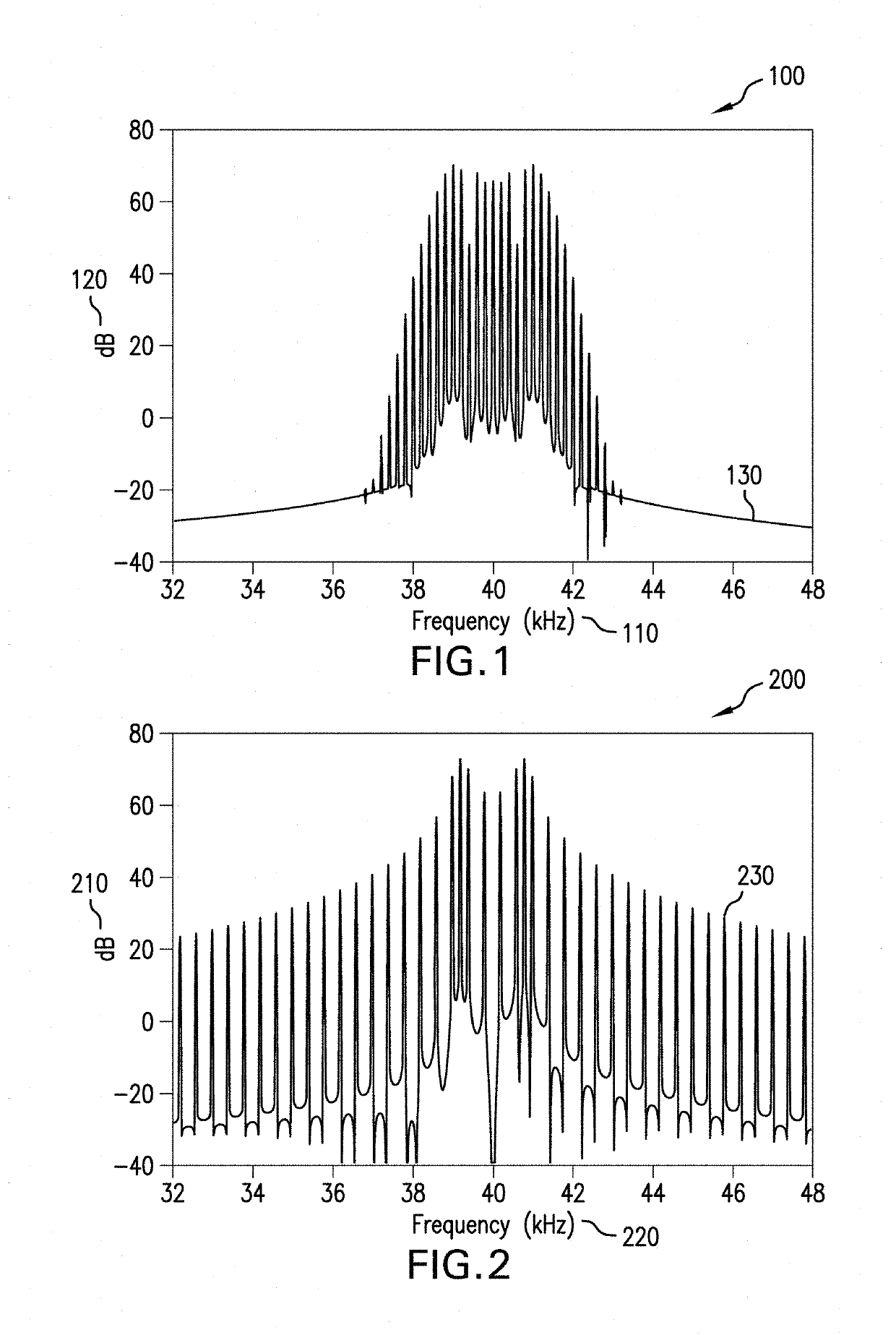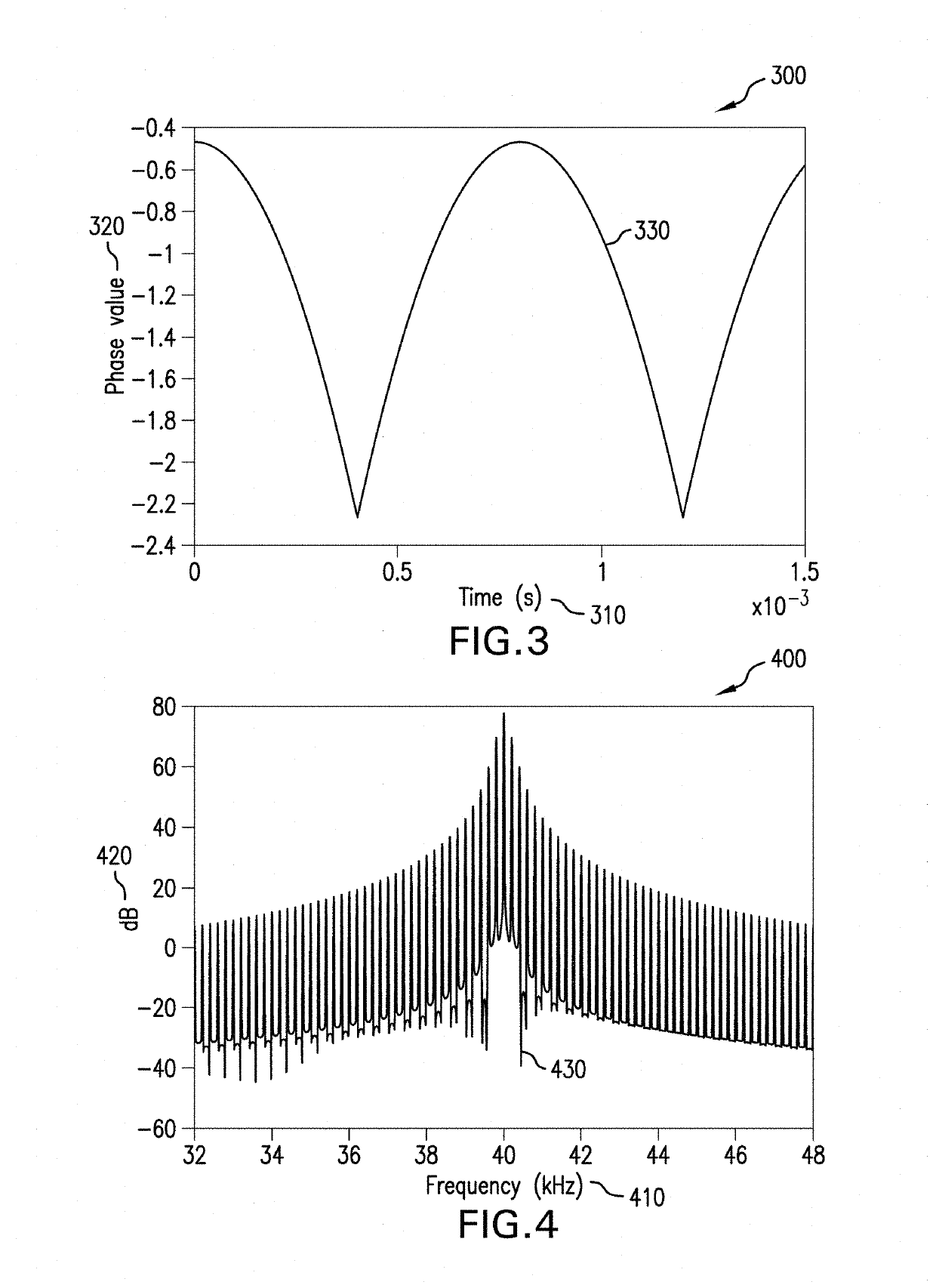Minimizing Unwanted Responses in Haptic Systems
- Summary
- Abstract
- Description
- Claims
- Application Information
AI Technical Summary
Benefits of technology
Problems solved by technology
Method used
Image
Examples
Embodiment Construction
[0042](1) Methods for Audio Reduction in Airborne Haptic Curves
[0043]A given curve to be traced with spatiotemporal modulation does not define a unique phase function (f(t)) solution. For instance, when tracing a line, more time could be spent on one half of the line than the other. Compared to an equal-time line this will create a different phase functions, yet the entire line is traced in both cases. On top of this, a given curve (repeated with a specific frequency) does not define a unique haptic experience. For a given carrier frequency, diffraction will limit the focusing resolution, and therefore some small deviations in the focus position can be made for a given curve and not create a discernible effect. The goal of this disclosure is to present methods with which to create a requested spatiotemporal haptic effect by adjusting the curve to be traced and the phase function(s) to trace that curve in a way which produces minimal parametric audio.
[0044]FIG. 2 is a graph 200 of an...
PUM
 Login to View More
Login to View More Abstract
Description
Claims
Application Information
 Login to View More
Login to View More - R&D
- Intellectual Property
- Life Sciences
- Materials
- Tech Scout
- Unparalleled Data Quality
- Higher Quality Content
- 60% Fewer Hallucinations
Browse by: Latest US Patents, China's latest patents, Technical Efficacy Thesaurus, Application Domain, Technology Topic, Popular Technical Reports.
© 2025 PatSnap. All rights reserved.Legal|Privacy policy|Modern Slavery Act Transparency Statement|Sitemap|About US| Contact US: help@patsnap.com



